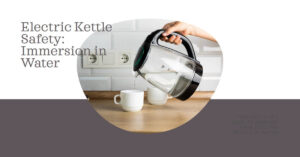Phone chargers have become an indispensable part of our daily lives. We rely on them to keep our devices powered up and connected.
But what happens if your phone charger accidentally gets wet? If your phone charger gets wet, it can lead to electrical short circuits and damage to the charger. Over time, it may also result in corrosion and reduced charging efficiency. However, there are steps you can take to mitigate the damage and prevent further issues.
In this article, we will explore the immediate and long-term effects of water damage on phone chargers, what you should do if it happens when to consider replacement, and some tips to prevent charger water damage.
What Happens When a Phone Charger Gets Wet
Immediate Effects:
When a phone charger comes into contact with water, it can lead to immediate consequences. The most common ones include electrical short circuits and damage to the charger itself.
Water conducts electricity, and when it enters the charger’s components, it can cause a short circuit, leading to malfunction or failure of the charger.
Long-Term Effects:
Even if your charger appears to work fine initially, water damage can have long-term effects. One significant issue is corrosion.
The water residue left behind can corrode the charger’s internal components over time, affecting its performance and lifespan.
Additionally, the charger’s charging efficiency may decrease, resulting in slower charging or intermittent connection.
Read also my article: Reviving Wet Electronics: Can They Bounce Back?
Steps to Follow When Your Phone Charger Gets Wet
Immediate Actions:
If your phone charger gets wet, it’s crucial to take immediate action to prevent further damage. Start by disconnecting the charger from the power source to minimize the risk of electrical hazards. Then, remove the charger from the water or moisture as quickly as possible.
Drying the Charger:
To dry the charger, use a dry cloth to wipe off any visible moisture. Avoid using heat sources like hairdryers, as they can damage the charger.
An alternative method is to place the charger in a container with uncooked rice or silica gel packets, which can help absorb the moisture effectively.
Testing and Usage Precautions:
After drying the charger, inspect it for any visible damage such as melting or deformation. If it appears undamaged, you can test it with a different device to ensure it’s still functioning properly. However, exercise caution and monitor the charger during use to prevent any potential risks.
Read also my comprehensive article: The Shocking Truth: Charging a Wet Device Can Be Dangerous!
When to Replace a Wet Phone Charger
Signs of Irreversible Damage:
In some cases, water damage may cause irreversible harm to your phone charger. If you notice a burnt smell, smoke, or visible melting or deformation, it’s a clear indication that the charger is damaged beyond repair and should be replaced immediately for safety reasons.
Safety Considerations:
Using a wet or damaged charger can pose electrical hazards and potentially harm your device or yourself.
It’s crucial to ensure that your charger is in good condition to prevent accidents. Additionally, a compromised charger may not provide the proper charging voltage and current, which could affect your device’s performance or battery life.
Tips to Prevent Charger Water Damage
Proper Handling and Storage:
Prevention is always better than dealing with the aftermath of water damage. Keep your chargers away from water sources, such as sinks, bathtubs, or pools.
When not in use, store your chargers in dry environments, preferably in a dedicated case or organizer.
Using Waterproof or Water-Resistant Chargers:
Consider investing in waterproof or water-resistant chargers, which are designed to withstand exposure to water or moisture. These chargers provide
an added layer of protection against accidental spills or splashes. Explore options available in the market and choose reliable and high-quality chargers from reputable manufacturers.
Conclusion
Taking proper care of your phone charger is essential to ensure its longevity and safe usage. If your charger gets wet, act swiftly to minimize damage, follow the necessary drying steps, and test it before using it again.
Remember, prevention is key, so take precautions to keep your charger away from water sources, and consider investing in water-resistant chargers.
By following these guidelines, you can maintain the functionality of your charger and keep your devices powered up reliably.
Want to learn more about electricity? Check my YouTube channel!
Are You An Electrical Engineer or Electrician?
Install my Free On Google Play Now! It’s 100% Free
The staff I recommend (Amazon Affiliate Links to products I believe are high quality):
- Economy 120 Volt/60Hz AC Power Source – Step-Down Voltage & Frequency Converters 1800W
- UNI-T Digital Multimeter Tester UT139C
- 50-Amp Extension Cord for RV “100ft”
- Voltage Stabilizer 110/220v
- Hair Dryer “best selling“
- TOSHIBA EM131A5C-BS Countertop Microwave Ovens
Disclaimer: This contains affiliate links to Amazon products. I may earn a commission for purchases made through these links.



